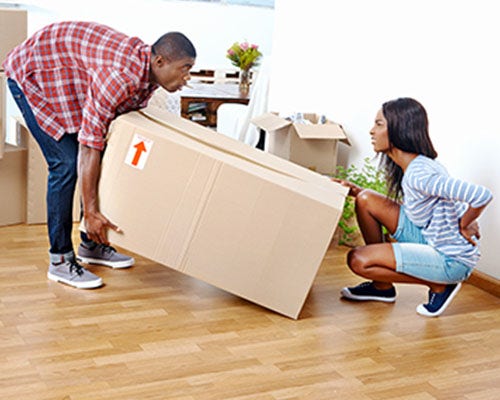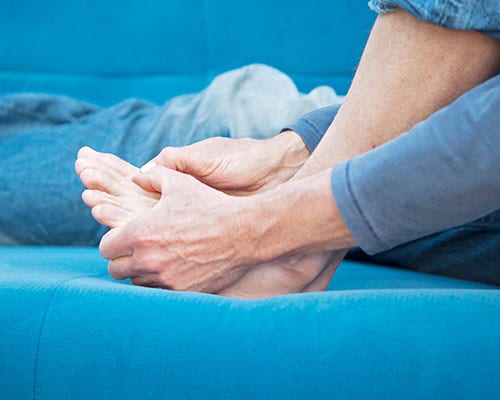Top 5 Ways to Avoid Back Pain
- 3/29/17

[vc_column el_id="text-content" css=".vc_custom_1515175055902{margin-top: -40px !important;padding-right: 0px !important;padding-left: 0px !important;}"][vc_column_text]Almost everyone has experienced an episode of back pain at some point or another. Sometimes the pain is relatively mild and resolves on its own within a few days or weeks. Other times, back pain is more severe and requires physical therapy, or rarely, surgery. The structure of the back is very intricately structured, consisting of vertebrae, discs, muscle, and cartilage, along with many tendons, ligaments, and nerves. Much of the body’s weight is supported by the back—especially the lower back—during regular activities like walking, running, and lifting, according to the Cleveland Clinic Foundation. As a result, there is a wide margin of potential injury to these complex parts during every day functioning.
With more than 3 million cases annually in the United States as reported by the Mayo Clinic, back pain is a common complaint. Symptoms can include muscle ache, stabbing or shooting pain, and limited range of motion. Fortunately, back pain is often self-treatable as well as preventable with the right care. Back pain is usually the result of a strain or sprain to the muscles, so bringing awareness to the most common causes of back pain can greatly help prevent onset by modifying daily activities that may lead to injury.
The 5 most common causes of back pain include:
The Bureau of Labor Statistics reports that back injuries account for one of every five injuries and illnesses in the workplace, with 80 percent of those associated with manual materials handling. Injuries can be due to improper extended reach, lifting too heavy an item, or bending, twisting, pushing, or pulling incorrectly, according to the University of Virginia Environmental Health & Safety department.
How to prevent it: Before lifting, assess the load. Are materials more than 1/3 to ½ of your body weight? Would the lift require an unnatural reach or stretch? If so, don’t attempt it and seek help. If the situation seems safe, keep feet planted firmly and bend at the knees, not the waist. Tighten abdominal muscles, use both hands, lift with the legs, and keep the load close to the body.
Many employees sit at a desk for the majority of the day. It is easy to slouch and not be mindful of proper posture and ergonomics. Sleeping positions can also cause the back to feel tense, causing pain during the night or upon wakening.
How to prevent it: Simple changes, including adjusting the position of the keyboard to avoid stretching too far forward and ensuring that chair height allows the feet to rest flat on the floor, are two ways to improve desk ergonomics, according to Medline Plus. Sitting up straight is very important. When sleeping on the side, using a pillow between the knees will reduce stress on the spine, while supporting the natural curve in the lower back, suggests University of Utah Health Care.
A sedentary lifestyle can contribute to back pain, leading to stiffness and weak muscles. Weak core muscles put strain on the back when carrying out regular activities. Further, regular exercise helps nourish spinal discs, soft tissue, and ligaments, according to Sutter Health, so inactive people miss those benefits. In many cases, lack of activity correlates to a higher body weight. In turn, excess weight puts added strain on structures of the lower back, according to the Cleveland Clinic.
How to prevent it: Engaging in regular physical activity and maintaining a healthy body weight helps strengthen muscles, maintain mobility, and avoid excess strain due to unnecessary weight.
With age, cartilage of the joints and discs in the lower back naturally breaks down, according to WebMD. It is more common in overweight people, as well as those who have manually laborious jobs that repeatedly stress the joints.
How to manage it: While arthritis is often unavoidable, there are techniques to manage it more comfortably, says WebMD. Proper weight management along with resistance and aerobic exercises can alleviate pain associated with arthritis. Regular activity can also increase range-of-motion and flexibility, and improve blood flow. Massage, acupuncture, hot and cold compresses, and supplements can also help.
Age-related wear and tear typically leads to gradual onset of disk herniation. Incorrect heavy lifting, twisted or turning during lifting, or rarely a fall or heavy impact to the back can cause a herniated disk, according to Mayo Clinic.
How to manage it: If pain is mild to moderate, over-the-counter medicines may help. Physical therapy is often suggested.
Be sure to seek medical care if any of these symptoms do not improve within a couple of days—don’t take any pain lightly—seek help.
This information is intended for educational and informational purposes only. It should not be used in place of an individual consultation or examination or replace the advice of your health care professional and should not be relied upon to determine diagnosis or course of treatment.
With more than 3 million cases annually in the United States as reported by the Mayo Clinic, back pain is a common complaint. Symptoms can include muscle ache, stabbing or shooting pain, and limited range of motion. Fortunately, back pain is often self-treatable as well as preventable with the right care. Back pain is usually the result of a strain or sprain to the muscles, so bringing awareness to the most common causes of back pain can greatly help prevent onset by modifying daily activities that may lead to injury.
The 5 most common causes of back pain include:
- Cause: Improper lifting
The Bureau of Labor Statistics reports that back injuries account for one of every five injuries and illnesses in the workplace, with 80 percent of those associated with manual materials handling. Injuries can be due to improper extended reach, lifting too heavy an item, or bending, twisting, pushing, or pulling incorrectly, according to the University of Virginia Environmental Health & Safety department.
How to prevent it: Before lifting, assess the load. Are materials more than 1/3 to ½ of your body weight? Would the lift require an unnatural reach or stretch? If so, don’t attempt it and seek help. If the situation seems safe, keep feet planted firmly and bend at the knees, not the waist. Tighten abdominal muscles, use both hands, lift with the legs, and keep the load close to the body.
- Cause: Improper body mechanics
Many employees sit at a desk for the majority of the day. It is easy to slouch and not be mindful of proper posture and ergonomics. Sleeping positions can also cause the back to feel tense, causing pain during the night or upon wakening.
How to prevent it: Simple changes, including adjusting the position of the keyboard to avoid stretching too far forward and ensuring that chair height allows the feet to rest flat on the floor, are two ways to improve desk ergonomics, according to Medline Plus. Sitting up straight is very important. When sleeping on the side, using a pillow between the knees will reduce stress on the spine, while supporting the natural curve in the lower back, suggests University of Utah Health Care.
- Cause: Poor physical condition
A sedentary lifestyle can contribute to back pain, leading to stiffness and weak muscles. Weak core muscles put strain on the back when carrying out regular activities. Further, regular exercise helps nourish spinal discs, soft tissue, and ligaments, according to Sutter Health, so inactive people miss those benefits. In many cases, lack of activity correlates to a higher body weight. In turn, excess weight puts added strain on structures of the lower back, according to the Cleveland Clinic.
How to prevent it: Engaging in regular physical activity and maintaining a healthy body weight helps strengthen muscles, maintain mobility, and avoid excess strain due to unnecessary weight.
- Cause: Arthritis
With age, cartilage of the joints and discs in the lower back naturally breaks down, according to WebMD. It is more common in overweight people, as well as those who have manually laborious jobs that repeatedly stress the joints.
How to manage it: While arthritis is often unavoidable, there are techniques to manage it more comfortably, says WebMD. Proper weight management along with resistance and aerobic exercises can alleviate pain associated with arthritis. Regular activity can also increase range-of-motion and flexibility, and improve blood flow. Massage, acupuncture, hot and cold compresses, and supplements can also help.
- Cause: Herniated disk
Age-related wear and tear typically leads to gradual onset of disk herniation. Incorrect heavy lifting, twisted or turning during lifting, or rarely a fall or heavy impact to the back can cause a herniated disk, according to Mayo Clinic.
How to manage it: If pain is mild to moderate, over-the-counter medicines may help. Physical therapy is often suggested.
Be sure to seek medical care if any of these symptoms do not improve within a couple of days—don’t take any pain lightly—seek help.
This information is intended for educational and informational purposes only. It should not be used in place of an individual consultation or examination or replace the advice of your health care professional and should not be relied upon to determine diagnosis or course of treatment.




